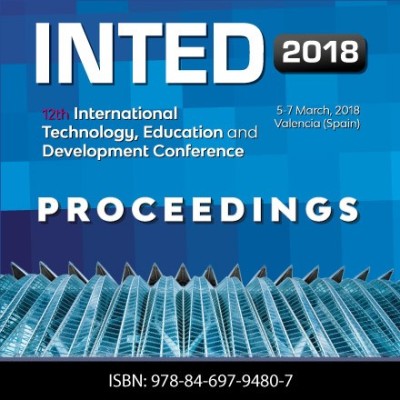
The technology is rapidly changing our world, especially the labor market. Consequently, education has to deal with other challenges provoking a re-conceptualization of teaching processes in order to enhance and amplify the learning achievements. On the other hand, the performance results in mathematics achieved by an essential part of European students in the international surveys, such as Program for International Student Assessment (PISA) and Trends in International Mathematics and Science Study (TIMSS) are below the Organisation for Economic Co-operation and Development (OECD) average, against the best performances achieved by some Asian countries. This also has been demonstrated by the decreasing interest and motivation of young students in professional and research careers based on science and technology.
One of the major cause of the current situation is the resistance of some teachers towards innovative changing and their persistence in the managing of their classes with traditional teaching and learning methods. In fact, the traditional teaching approaches introduce “mathematics” as too abstract subject for students avoiding to emphasise the strict connections that are between scientific topics and reality. Therefore, students can’t see the immediate application of science to their everyday life.
This situation is intensified, firstly, by the fact that some teachers are lacking digital skills jeopardizing a real and effective integration of technology in their everyday lessons. But where teachers have a good digital literacy, they need more support on how to exploit all the learning potentialities in the use of new technological tools.
In this context, a different interdisciplinary and multidisciplinary approach is required to improve and develop science and mathematics skills and to stimulate actively students' interest in the scientific study and for their future careers. An innovative combination between the technology and arts is proposed in this research work ensuring the interconnection of different languages, such as visual, sensory, verbal and non-verbal in the mathematics study.
Although the official school curricula are not oriented to underline the existing relations between science and art, the use of painting, dance, theatre, poetry in the mathematics teaching makes science more interesting and attractive and facilitates the development of creative and complex ideas in students.
This article discusses the introduction of the technological tools and art-works on the base of the three phases, as defined in Singapore’s method applied to mathematics study, that can guide students to the discovery of the challenging connections between math and reality.
In particular, the pathway consists in the following basic steps: the objects manipulation (concrete - the first phase), the visual representation (pictorial - the second phase) and the abstract representation of the mathematical concept or formula (abstract - the third phase). In addition, the introduction and integration of technology and art-works in the whole process will allow students to reinforce their conventional, conceptual and procedural understanding based on the theory of variability.
Keywords: mathematics education, learning by doing, problem solving, inquiry-based learning, arts, technology-enhanced learning.
How to cite this work:
Tramonti, M. (2018). Technology and Art to improve mathematics learning. In Proceedings of INTED2018 Conference (pp. 1492-1497).
 The technology is rapidly changing our world, especially the labor market. Consequently, education has to deal with other challenges provoking a re-conceptualization of teaching processes in order to enhance and amplify the learning achievements. On the other hand, the performance results in mathematics achieved by an essential part of European students in the international surveys, such as Program for International Student Assessment (PISA) and Trends in International Mathematics and Science Study (TIMSS) are below the Organisation for Economic Co-operation and Development (OECD) average, against the best performances achieved by some Asian countries. This also has been demonstrated by the decreasing interest and motivation of young students in professional and research careers based on science and technology.
The technology is rapidly changing our world, especially the labor market. Consequently, education has to deal with other challenges provoking a re-conceptualization of teaching processes in order to enhance and amplify the learning achievements. On the other hand, the performance results in mathematics achieved by an essential part of European students in the international surveys, such as Program for International Student Assessment (PISA) and Trends in International Mathematics and Science Study (TIMSS) are below the Organisation for Economic Co-operation and Development (OECD) average, against the best performances achieved by some Asian countries. This also has been demonstrated by the decreasing interest and motivation of young students in professional and research careers based on science and technology.